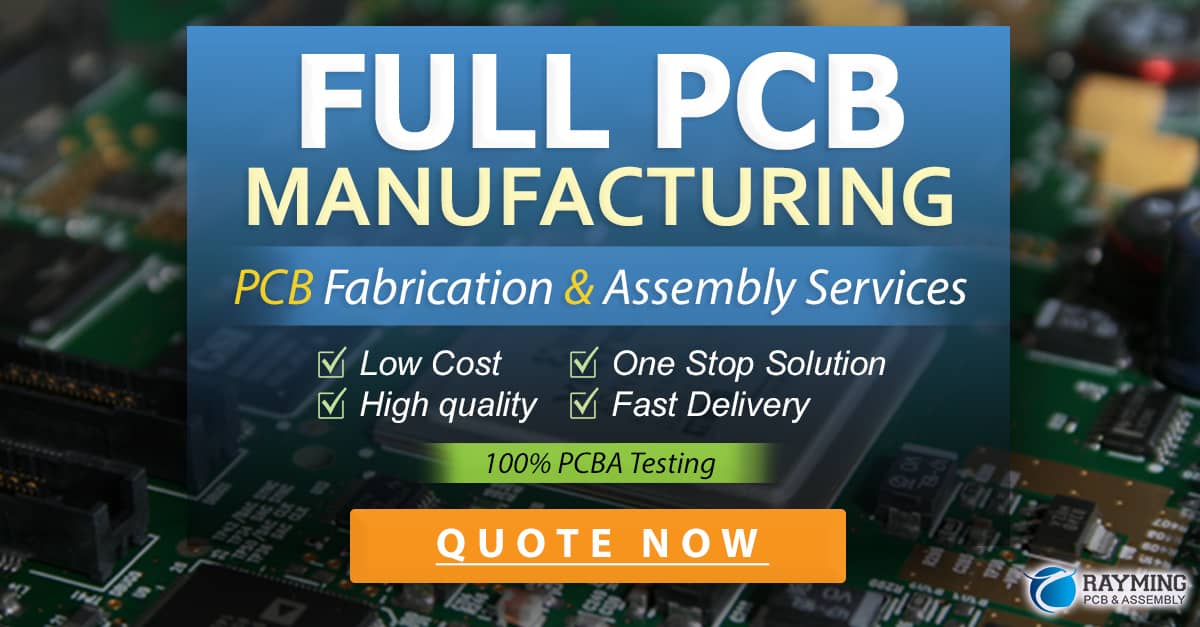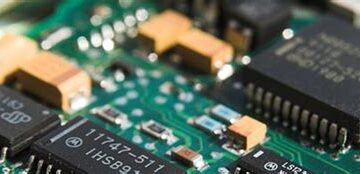Introduction to IPC and the Green Cleaners Standard
IPC, the global trade association for the electronics manufacturing industry, has released a new standard for green cleaners used in electronics manufacturing. The IPC-1402 Standard for Green Cleaners Used in Electronics Manufacturing is now available for public review and comment.
The development of this standard was driven by the increasing demand for environmentally friendly and sustainable manufacturing practices in the electronics industry. As consumers become more aware of the environmental impact of the products they purchase, manufacturers are looking for ways to reduce their carbon footprint and minimize the use of hazardous chemicals in their processes.
What are Green Cleaners?
Green cleaners are cleaning products that are designed to have minimal impact on the environment and human health. They are typically made from renewable resources, biodegradable, and free from toxic chemicals such as volatile organic compounds (VOCs), ozone-depleting substances, and heavy metals.
Green cleaners are used in various stages of electronics manufacturing, including:
- Cleaning of printed circuit boards (PCBs)
- Cleaning of electronic components
- Cleaning of assembly tools and equipment
Benefits of Using Green Cleaners in Electronics Manufacturing
The use of green cleaners in electronics manufacturing offers several benefits, including:
-
Reduced environmental impact: Green cleaners are designed to be biodegradable and have minimal impact on the environment. They do not contribute to air or water pollution and do not pose a risk to wildlife.
-
Improved worker safety: Many traditional cleaning products contain hazardous chemicals that can cause health problems for workers who are exposed to them regularly. Green cleaners are formulated to be safe for workers to use and do not pose a risk of respiratory problems or skin irritation.
-
Compliance with regulations: Many countries have regulations in place that restrict the use of certain chemicals in manufacturing processes. By using green cleaners, manufacturers can ensure compliance with these regulations and avoid costly fines or penalties.
-
Cost savings: While green cleaners may have a higher upfront cost than traditional cleaning products, they can lead to long-term cost savings by reducing the need for personal protective equipment (PPE), hazardous waste disposal, and regulatory compliance costs.
Overview of the IPC-1402 Standard for Green Cleaners
The IPC-1402 Standard for Green Cleaners Used in Electronics Manufacturing provides guidelines for the selection, use, and evaluation of green cleaners in electronics manufacturing processes. The standard covers a wide range of topics, including:
- Definitions of green cleaners and related terms
- Requirements for the composition and performance of green cleaners
- Test methods for evaluating the effectiveness and safety of green cleaners
- Guidance on the selection and use of green cleaners for specific applications
- Labeling and documentation requirements for green cleaners
The standard was developed by a committee of experts from across the electronics manufacturing industry, including representatives from chemical suppliers, equipment manufacturers, and electronics assembly companies.
Key Requirements of the IPC-1402 Standard
Some of the key requirements of the IPC-1402 Standard include:
-
Composition requirements: Green cleaners must be free from certain hazardous chemicals, including ozone-depleting substances, carcinogens, reproductive toxins, and persistent bioaccumulative toxins (PBTs).
-
Performance requirements: Green cleaners must meet certain performance criteria, such as cleaning effectiveness, compatibility with materials and equipment, and shelf life.
-
Test methods: The standard specifies test methods for evaluating the performance and safety of green cleaners, including methods for measuring cleaning effectiveness, corrosion resistance, and toxicity.
-
Labeling requirements: Green cleaners must be labeled with information on their composition, hazards, and proper use and disposal.
-
Documentation requirements: Manufacturers of green cleaners must provide detailed documentation on the composition, performance, and safety of their products.
Importance of the IPC-1402 Standard for the Electronics Manufacturing Industry
The release of the IPC-1402 Standard is a significant step forward for the electronics manufacturing industry in its efforts to adopt more sustainable and environmentally friendly practices. By providing clear guidelines for the selection and use of green cleaners, the standard will help manufacturers to make informed decisions about the products they use in their processes.
The standard will also help to level the playing field for chemical suppliers who are developing and marketing green cleaners. By setting clear requirements for the composition and performance of these products, the standard will ensure that manufacturers can trust the claims made by suppliers and have confidence in the effectiveness and safety of the products they are using.
In addition, the standard will help to drive innovation in the development of new and improved green cleaners. As manufacturers seek to comply with the requirements of the standard, chemical suppliers will be motivated to develop products that meet or exceed these requirements, leading to the introduction of more effective and sustainable cleaning solutions.
Impact on Electronics Manufacturing Processes
The adoption of the IPC-1402 Standard is likely to have a significant impact on electronics manufacturing processes. Some of the key changes that manufacturers may need to make include:
-
Switching to green cleaners: Manufacturers will need to evaluate their current cleaning products and processes to determine whether they meet the requirements of the standard. In many cases, this may require switching to new green cleaners that have been specifically formulated to meet the standard.
-
Updating equipment and processes: The use of green cleaners may require changes to existing equipment and processes. For example, some green cleaners may require different application methods or longer dwell times than traditional cleaning products.
-
Training workers: Workers will need to be trained on the proper use and handling of green cleaners to ensure their effectiveness and safety. This may require updates to existing training programs and the development of new training materials.
-
Monitoring and reporting: Manufacturers will need to implement systems for monitoring the use of green cleaners and reporting on their performance and compliance with the standard. This may require new documentation and record-keeping processes.
Benefits for Consumers and the Environment
The adoption of the IPC-1402 Standard will also have benefits for consumers and the environment. By reducing the use of hazardous chemicals in electronics manufacturing, the standard will help to minimize the environmental impact of these processes and protect the health and safety of workers and communities.
In addition, the use of green cleaners may lead to the development of more durable and reliable electronic products. Traditional cleaning products can sometimes leave residues on electronic components that can lead to performance issues or failures over time. Green cleaners, on the other hand, are designed to be residue-free and may help to extend the life of electronic products.
Finally, the adoption of the IPC-1402 Standard may help to increase consumer confidence in the sustainability and environmental friendliness of electronic products. As consumers become more aware of the environmental impact of the products they purchase, they may be more likely to choose products that are manufactured using sustainable and environmentally friendly processes.

Steps for Implementing the IPC-1402 Standard
Manufacturers who wish to adopt the IPC-1402 Standard will need to follow a series of steps to ensure compliance and effectiveness. These steps may include:
-
Reviewing current cleaning products and processes: Manufacturers should evaluate their current cleaning products and processes to determine whether they meet the requirements of the standard. This may involve working with chemical suppliers to identify green cleaners that are suitable for their specific applications.
-
Conducting performance and safety testing: Before switching to new green cleaners, manufacturers should conduct performance and safety testing to ensure that the products meet the requirements of the standard and are effective for their specific applications.
-
Updating equipment and processes: Manufacturers may need to make changes to their existing equipment and processes to accommodate the use of green cleaners. This may involve investing in new equipment or modifying existing equipment to ensure compatibility with the new cleaning products.
-
Training workers: Workers will need to be trained on the proper use and handling of green cleaners to ensure their effectiveness and safety. This may require the development of new training materials and the implementation of new training programs.
-
Monitoring and reporting: Manufacturers will need to implement systems for monitoring the use of green cleaners and reporting on their performance and compliance with the standard. This may involve new documentation and record-keeping processes.
Challenges and Considerations
While the adoption of the IPC-1402 Standard offers many benefits for manufacturers, there are also some challenges and considerations to keep in mind. These may include:
-
Cost: Green cleaners may have a higher upfront cost than traditional cleaning products, which may be a barrier for some manufacturers. However, the long-term cost savings from reduced hazardous waste disposal and regulatory compliance may offset these initial costs.
-
Compatibility: Some green cleaners may not be compatible with certain materials or equipment used in electronics manufacturing. Manufacturers will need to carefully evaluate the compatibility of new cleaning products with their specific applications.
-
Performance: While green cleaners are designed to be effective, they may not always perform as well as traditional cleaning products in certain applications. Manufacturers will need to conduct thorough performance testing to ensure that green cleaners meet their specific requirements.
-
Supply chain: The adoption of the IPC-1402 Standard may require changes to a manufacturer’s supply chain, as they may need to work with new chemical suppliers or distributors to obtain green cleaners that meet the requirements of the standard.
Frequently Asked Questions (FAQ)
-
What is the IPC-1402 Standard?
The IPC-1402 Standard is a set of guidelines for the selection, use, and evaluation of green cleaners in electronics manufacturing processes. It provides requirements for the composition, performance, and safety of green cleaners, as well as guidance on their selection and use for specific applications. -
Why is the IPC-1402 Standard important for the electronics manufacturing industry?
The IPC-1402 Standard is important because it helps manufacturers to adopt more sustainable and environmentally friendly practices by providing clear guidelines for the use of green cleaners. It also helps to level the playing field for chemical suppliers who are developing and marketing green cleaners, and drives innovation in the development of new and improved cleaning solutions. -
What are some of the key requirements of the IPC-1402 Standard?
Some of the key requirements of the IPC-1402 Standard include composition requirements (such as the exclusion of certain hazardous chemicals), performance requirements (such as cleaning effectiveness and compatibility), test methods for evaluating performance and safety, labeling requirements, and documentation requirements. -
What steps should manufacturers take to implement the IPC-1402 Standard?
To implement the IPC-1402 Standard, manufacturers should review their current cleaning products and processes, conduct performance and safety testing of new green cleaners, update their equipment and processes as necessary, train workers on the proper use and handling of green cleaners, and implement systems for monitoring and reporting on compliance with the standard. -
What are some of the challenges and considerations associated with adopting the IPC-1402 Standard?
Some of the challenges and considerations associated with adopting the IPC-1402 Standard may include the higher upfront cost of green cleaners, compatibility issues with certain materials or equipment, potential performance limitations compared to traditional cleaning products, and changes to the supply chain to obtain green cleaners that meet the requirements of the standard.
Conclusion
The release of the IPC-1402 Standard for Green Cleaners Used in Electronics Manufacturing represents a significant step forward for the industry in its efforts to adopt more sustainable and environmentally friendly practices. By providing clear guidelines for the selection, use, and evaluation of green cleaners, the standard will help manufacturers to make informed decisions about the products they use in their processes, while also driving innovation in the development of new and improved cleaning solutions.
While there may be some challenges and considerations associated with adopting the standard, the benefits for manufacturers, workers, consumers, and the environment are clear. By reducing the use of hazardous chemicals in electronics manufacturing, the standard will help to minimize the environmental impact of these processes, protect the health and safety of workers and communities, and increase consumer confidence in the sustainability and environmental friendliness of electronic products.
As the electronics manufacturing industry continues to evolve and adapt to changing consumer demands and regulatory requirements, the adoption of the IPC-1402 Standard will be an important step in ensuring the long-term sustainability and competitiveness of the industry.



0 Comments